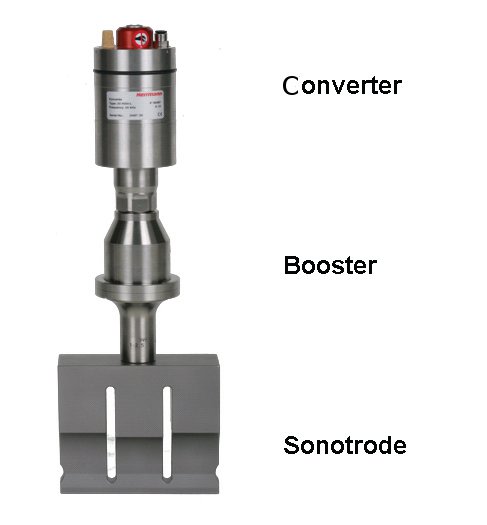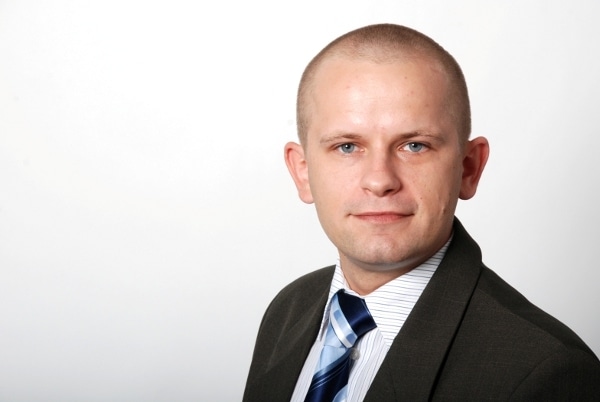The ultrasonic process directs mechanical vibrations into the plastic assembly utilizing a specific frequency, amplitude, force and duration. The ultrasonic stack consists of generator, converter, transformation piece (called booster) and weld tool (called sonotrode). The generator converts voltage into high-frequency voltage. By using the piezoelectric effect, the converter changes the high-frequency voltage into ultrasonic waves (20 to 35 kHz). The sonotrode expands and contracts rapidly (20kHz means 20.000 movements per second), thereby introducing the mechanical vibrations into the joint area of the work piece. The vibrations cause friction in the joint area and start melting the material. A short cooling phase under pressure will ensure correct solidification. Since ultrasonic vibrations break up the molecular structure, the parts are tightly bonded, as if they were one piece.

It is all about the right joint design
The major advantage of ultrasonic technology is the specific energy input, which allows a precisely defined and temporally controlled melting. Through a special joint design the ultrasonic waves are focused directly into the joint zone. The joint design for injection moulded parts consists of suitable welding geometries with points or edges in the joining area. They are called energy directors and define the direction of the melt initiation. The contact points of the weld geometry prevent large-scale coupling.

Good results in terms of strength, tightness and appearance can be achieved if the plastic parts are specifically designed for the ultrasonic process, including all procedural and material features. Herrmann Ultraschall is a German specialist for ultrasonic technology and focuses on sustainable consulting. Polish sales engineer Marcin Tomczyk explains: “We do not sell a mere machine but rather a complete solution for our customers’ applications. This starts in the planning phase of the injection moulded parts where we advise the engineers of the right joint design."




